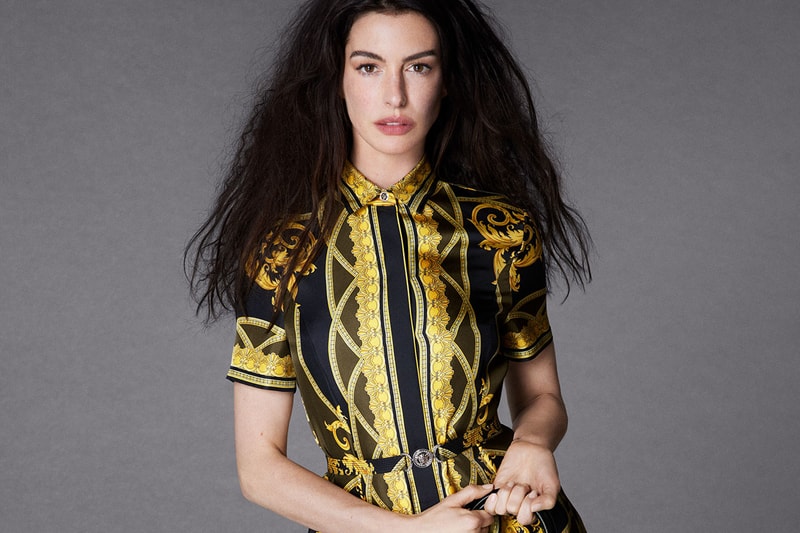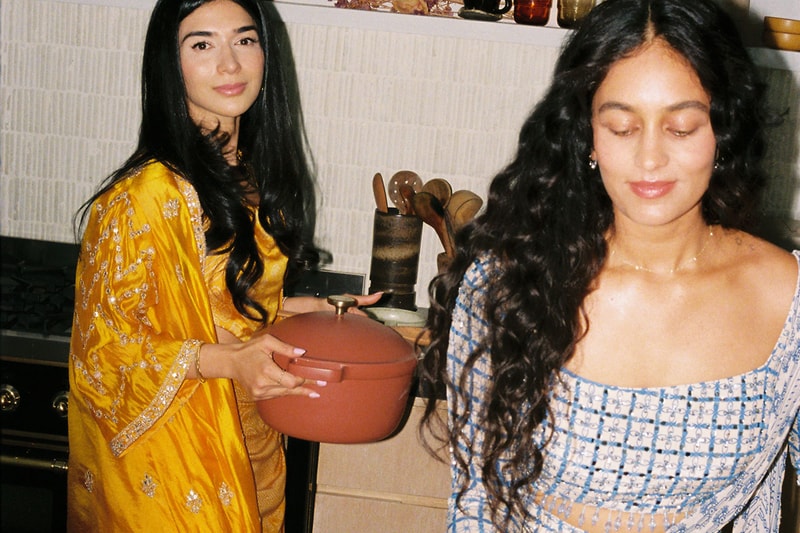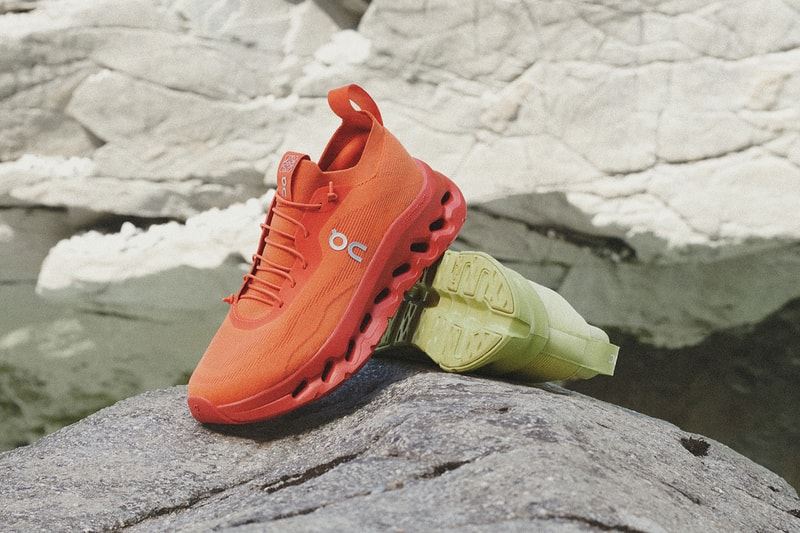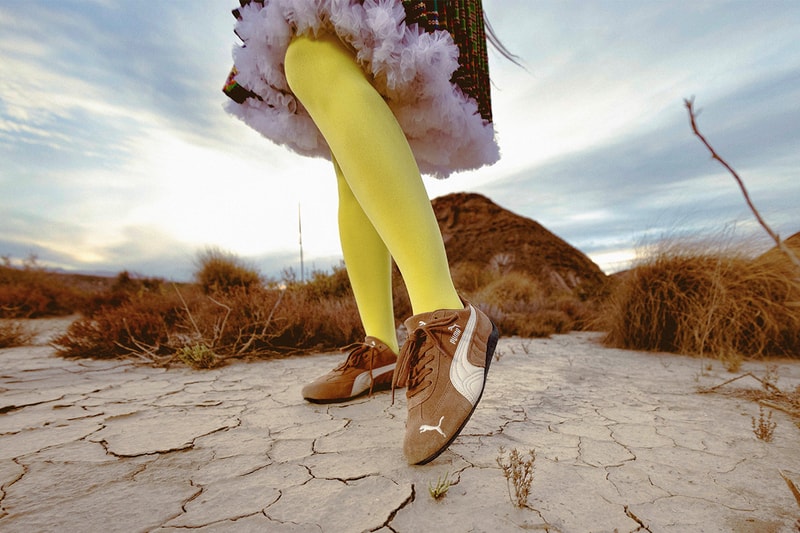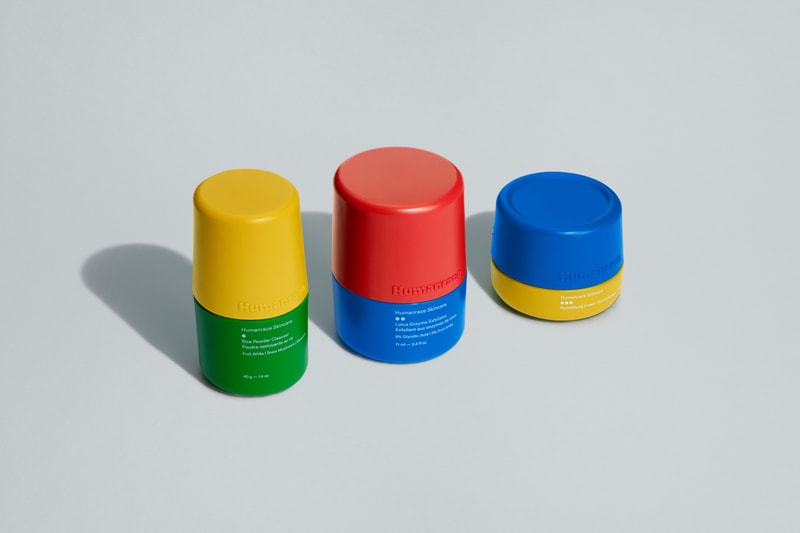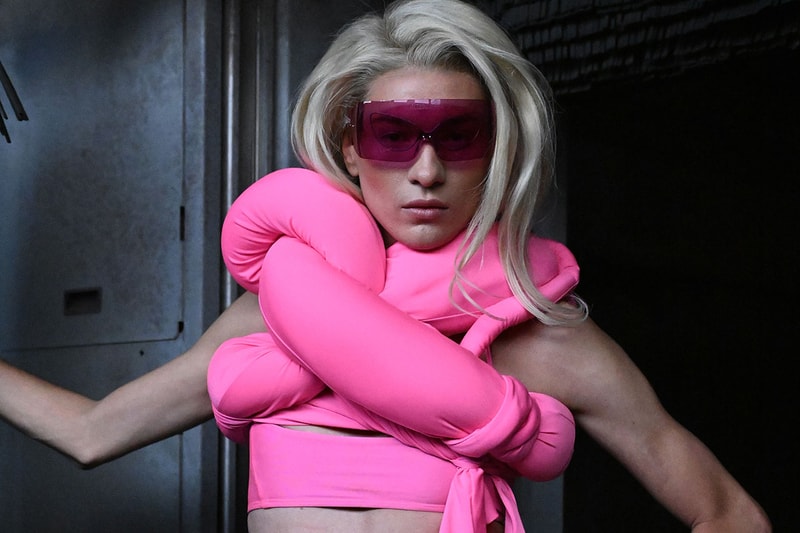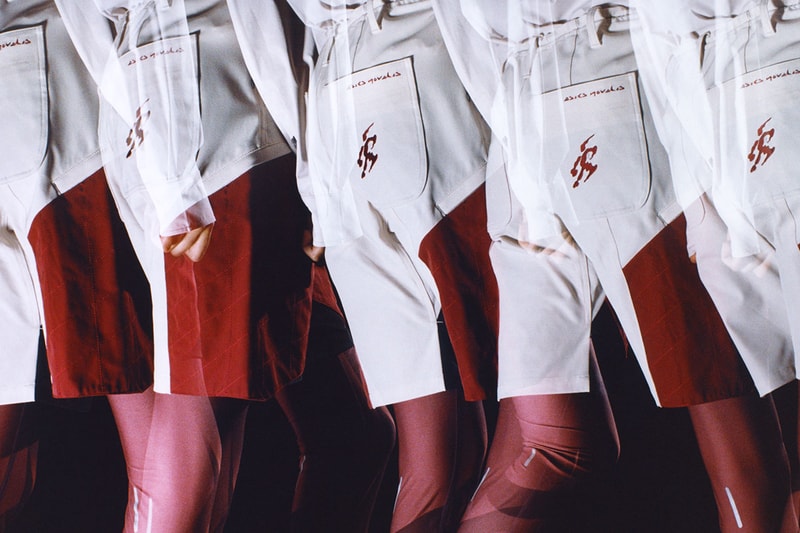Behind the Atelier: Sade Mims of EDAS Connects the Past and Present With Her Sustainable Accessories Line
info@hypebae.com (HYPEBAE) Tue, 29 Jun 2021 HYPEBAE
Behind the Atelier is a fashion-focused series that examines the unique backstories and design processes behind the fashion industry’s most captivating talents. Pulling back the curtain on each designer’s creative space and practice, Behind the Atelier will highlight and give an inside look into the industry’s most exciting names.
For the eighth installment of the series, HYPEBAE sat down with Sade Mims, the founder and designer of the New York-based accessories brand, EDAS. In a candid conversation, Sade shared how the women who raised her play a vital role in the brand’s identity, ways she uses her line as a form of artistic expression to celebrate the beauty of global cultures, how her affinity for eras of the past interwoven with the present influences her sustainable accessories, and how the art of dressing has fueled her design and creative practice.

Toni Morrison once said: “Your life is already artful — waiting, just waiting, for you to make it art.” For Sade Mims, this resounding message symbolizes how from a young age the remarkable talent has channeled her surroundings and artistic prowess to create meaningful works of art, deepening the connections between the past and present, self-expression, and storytelling. Through dabbling in a multitude of mediums, the self-taught designer and artist has developed ingenious, pragmatic ways of re-crafting treasures of the past into tangible creations for present-day that celebrate her roots, global cultures and the inspiring women who raised her.
Operating out of her Brooklyn-based design studio that doubles as a shoppable showroom for clients, Sade’s affinity for rich color palettes and breathing new life into vintage keepsakes can be seen the moment you step inside — from her assortment of one-of-a-kind furniture pieces to her mesmerizing paintings she creates herself and stacks of ultra-rare editions of the ‘90s fashion magazine, Trace. Since launching EDAS in 2013, the arbiter of taste has established her sustainable accessories brand based on the premise of finding beauty in nostalgic references that tend to be overlooked or forgotten.
With an unmatched eye for design, craftsmanship and the ability to turn anything she touches into gold, Sade is able to bring cultures, stories and personal inspirations together to produce tantalizing handbags, abstract, expressionist jewelry and handcrafted, beaded bucket hats made in collaboration with Cameron Tea. Combining her signature eclectic design motifs that evoke nostalgia with timeless shapes and silhouettes, Sade has devised classic yet statement-making handbags — featuring ever-so-popular styles like the Yshaia Bag, Mini Belt Bag and Maria — that come complete in buttery, soft materials and brilliantly-bold colors such as vivid yellow, bright pink and pea green along with new colorways like pale, powder blue and rich cherry red, that will be launching at Saks Fifth Avenue in July.
Through focusing on the creation of sustainable accessories that ooze uniqueness and project a symphony of unbridled creativity, Sade is catering to women of all walks of life with her artistic styles that evoke joy, nostalgia and emotion in tangible form.
To get to know the designer, HYPEBAE sat down with Sade Mims to discuss how she knew she wanted to pursue a career as a designer in ninth grade, how she learned self-expression and style through her mother and grandmother, how relics of the past influence her design and artistic practice, and how storytelling fuels the EDAS ethos.

How has your heritage and upbringing influenced the way you perceive fashion or approach designing?
Deeply, and really just the notion of getting dressed. When I say dress, I mean both in a literal sense of putting on clothing, but also even from a stylistic standpoint. Most of the women — specifically in my family and the men too — my father was my most up-close sense of what it meant to be dapper or what it meant to get dressed up just to go to the grocery store. I think those small yet, powerful implementations that [my family] did as a normal part of their existence deeply influenced how I looked at style, and how I looked at self-expression through style — which then later impacted me as a designer because it made me realize that I wanted to create things so people could have that same feeling. I think it was a very beautiful interpretation from every angle, me seeing those different vast choices, but also that form of expression really inspired me to be a designer, truly.
Your personal style is unmatched and the art of dressing is a mode of expression that fuels both your creativity and brand. How would you describe your style and how do you source your insanely beautiful fashion finds?
My personal style — and from my brand perspective — I would describe as eclectic, classic, but also I do find that I fall into the category of a more sexy dresser. I’m always like the midriff is out, I always love a baggy pant with a tight top, a heel and a nice bag that’s in a color from [present-day]. I have a very specific type of style that doesn’t ever go too far. I’m definitely someone who loves dressing up and I work in heels every day. I love expressing myself through how I show up in the world, whether it be with my hair, and I’m quite known for my hair. I think all of those things are really important to me, but how I shop — I just love vintage shopping. Outside of just genuinely enjoying it, I also just know that what I find is better and I find that older things attract me.
I got these shoes that I’m wearing today from eBay, and they were only $25 USD. I am an eBay fanatic, there’s that. So eBay and Etsy, and all those platforms are my go-tos to find vintage because I love old shoes, and I would say I have some really strong favorites. I have these strappy Manolo Blahniks that are like lace or cotton and they have a leather metallic logo. I got them from eBay some years ago and they’re really my favorites. They just remind me of really dainty princess shoes. I don’t wear them often because they’re my favorite, but they are my most prized possession.

Expanding upon the amazing women in your life, like your mother and grandmother. How have they inspired you especially when beginning your journey as a designer?
My mother and my grandmother deeply influenced me. My mother, for the sake of expression and needing to tell my story through design and art. Then my grandmother, when we talk about accessories, I think of the way she honored accessories and how that made the whole look. The way she put on her chain, after everything was said and done, I always used to be so enamored by that. My grandmother was something else, I tell you. She was a deep inspiration for me in terms of the accessories realm of things because she really took that so seriously, and she was such a dresser and she took her time. She had a massive hat collection that I always deeply admired. She had stacks of hats in boxes to the ceiling. She never let her hats just freely sit, and she had everything in its own individual box or bag or cupboard or room. She had her furs and she would keep them in a temperature-controlled room. I think her pace of getting dressed was a huge influence for me as a designer. When I talk about my pace, how I work, how I honor my time, how I honor my pace, my voice, and not falling into the confinements of what the fashion calendar says, but really moving at my own accord.
At what point did you realize that fashion design or rather designing accessories was your creative calling?
I think I knew very early on. I've always been an entrepreneur at heart, that’s the base. Since I was a kid in high school or grade school, I was selling candy just as a come-up and I was making jewelry too. A friend of mine named Pierce, he actually passed away maybe a few years ago, was the only person back in the day that knew about construction. I don't know how he did, but he did. He owned a drill and I found that out, and I was like “Pierce, I'm going to give you a quarter. Can you drill holes in [these pieces] so I can make necklaces?” So I had this whole operation in ninth grade where I would go give him quarters and I think I paid him a dollar per drill. I would give him the money to drill the holes, I would go search for chains, and then I would sell these necklaces in school as my come-up just so I could have money to buy candy or use something with that money. I guess I would say early on since the ninth grade, I kind of knew that I wanted to move to New York and become a designer. I started with selling those chains in high school as a way of just practicing what could be for my bigger future.

What inspired you to launch EDAS in 2013?
I talk a lot about expression and I've always been an artist since I was a kid. I was a painter and painting was my first real medium dabbling into the art form. For me, when I was painting — both then and now — it has been a form of release. It’s me needing to speak and say something in another way in another realm, really. EDAS is a manifestation or a tangible reality of me needing to say things, and me wanting to share all the things that live in my head that I want to recreate and put out into the world.
What was the process like when establishing and figuring out the identity of your brand?
I definitely find that nostalgia and looking at classic silhouettes is a deep, strong identity for us as a brand. I don’t design for what’s on-trend and I never even dressed that way. I like to look at past things that then inspire me to create for the now. Anything that feels timeless, anything that feels old, anything that feels reminiscent to something that already has existed is really a driving force for me as a designer. That could be music and that’s why I really listen to a lot of old sounds. I’m not even too familiar with what’s happening in the new age of music as much as I could be, especially when it comes to certain genres.
I think that's a life theme for me. I shop only really on eBay or second hand and I have a way of existing in this world that always pulls back to past times. Sometimes it bites me in the ass because I find that I can be so caught up in the past that I lose sight of what’s in front of me. I'm working on that, but I think there's some strong elements to that, and I think it shows up a lot in how I design — like classic and timely silhouettes —whether that be with the collaboration that I did with Cameron Tea. When I bumped into his work, it made me think of the things I found in my grandmother's home, and in her kitchen she had a placemat that reminded me so much of Cameron’s beaded technique. What I create always has to kind of remind me of past times, whether I’ve experienced them or it’s something that I read or a film I saw from the ‘70s or the ‘60s. That is the driving force. Nostalgia plays a huge role in why EDAS exists and even the brand identity of EDAS in its entirety.

Describe the EDAS ethos, aesthetic and how it celebrates women as well as global cultures.
EDAS is a celebration of women and it’s an ode to the women that raised me and the women that brought me here, and have really paved the way in terms of my inspiration, but also just showing me that that all things are possible and all things are tangible. When we talk about culture, I'm from Philadelphia and I was born in Philly, and raised in South Jersey. So both of those places are considered home for me. Philly per se is a city that has a wide range of people and demographics — whether that be African folks or Indian — it's just a very cultural environment. I think that has played a really huge impact on how I design.
As I've gotten older, I've traveled on my own as an adult. I find really great comfort in Caribbean islands. I feel like these places where people of color dominate really inspire me because when I first started EDAS it was a means of expression, but I also used what was in front of me and what I had access to. I think about that a lot when I go to other countries that are considered third world — which is not a part of my language at all — just to paint the picture of how people use resources without having a bunch there, and having a really simple life, but are able to really create beautiful art pieces out of that. I feel like I have a very similar trajectory within my own right, the similarities are there, but then I'm also deeply just inspired by the aesthetics and the deeper meanings that these places have, and how it encompasses my work.

How do you use storytelling to fuel your design and creative practice and how that embodies your brand?
Oh, storytelling is huge. Whether it'd be from my own personal truths or someone else's, I feel like storytelling is really imperative in terms of how I design, but also how we brand, and campaign and market like post-release or post-design process. Whether that’s sharing openly what that process looks like for me as the designer or my team or creating some sort of short film to coincide with the release. Whether it's words in it or just visuals, I always want to bring the storytelling component with whatever we are releasing. It's really important to me because I think everything truly has a story and I want to be really mindful of that as I design because that's just the reality. My process never looks in the near, whether I'm putting out a fire during the design process or how I even got inspired by my most recent collection, it all has a story to it. For me to share those moments are really really important.

What is your design methodology or creative practice like when devising a new accessory — whether it’s the creation of a handbag, hat or piece of jewelry?
It’s a really visceral moment for me. It starts off by me really visualizing it, so it's all happening on the inside. I'll visualize something that I want to create, and I'll fester on it for a while. Then I sketch it and if it's jewelry, I'll make a prototype of it. If it's a bag, I'll also make a prototype out of paper most times. Whether it be a miniature version of [a bag], I think it’s just a way for me to practice with my hands. Then I sit with it for a while and with the jewelry, I'll wear it, I'll check out the weight, I'll check out the durability of it. The handbag, I'll take it to my manufacturers, I’ll show them what I'm thinking. I swatch my leather for it. I get my hardware and lining and all the things, and we do the prototype or the sample rather.
I do get really reclusive and I get really heady even. I always have my sketchbook on hand so if something comes to my head, I can at least jot it down. I'm a writer and a sketcher, and I love having it in tangible form. So if I have my phone it will suffice, but what I love is having the notes on paper. When you talk about being an old soul and old school, that's my way, you know? Even down the line when people use CAD and these things, I'm not that designer truthfully. I'm an old school sketcher who brings my sketches to my people and I’m like “this is how you got to interpret this,” because I don't really work with the technology side of it.

What do you envision and hope to achieve for your brand in the next handful of years?
The goal really is to just expand on our offerings — like I want to design shoes. I have so many sketches of shoe designs that I want to explore. Because I love doing these experiences, that’s why we started the dinner series as a start to this; I really want to expand EDAS into a bed and breakfast, that’s another goal of mine, to have some sort of experience. I would love to do it in Mexico, Grenada, and in Philly. I just recently had a conversation with a friend of mine who lives in Oaxaca about the possibility of what that looks like and buying land. The bigger goal is to continue within the sectors of fashion, but to then branch out into lifestyle, where we merge hospitality with food and are all in one sector.

What would you say is an integral part of EDAS and how is your brand an authentic depiction of who you are as an artist?
Sustainability is really important to me, truly. We as a brand, but me as a designer; I’m a work in progress. Oftentimes I’m trying to figure out how to do and be better, and that shows up in how I move through the world, but especially I wanted to show up also as a designer. When I first started I didn't have access to a bunch of things, so I was using [pieces] from a jewelry store in the Philadelphia airport that I worked at. Every weekend, they would get rid of a bunch of damaged jewelry. I remember being so hurt by it, I don’t know why. I would be like “No! Don’t get rid of it!” So they would give me the jewelry and I would rework it. That was really the start of creating jewelry outside of selling in high school of course. I think that running theme has shown up; even in our denim drops online that were made with ‘90s denim. Reusing pieces that previously had a lifespan and incorporating them into our designs is something that’s really important to me.
I want to be better about doing better within the earth and even how I try to merge, now with Covid it’s slowed down, but I’m really into land preservation and talking about the importance of sustainable farming. I’ve really tried to merge those conversations within EDAS. It’s really been a beautiful journey to see how these separate worlds can come together. We do a dinner series where we use local farms to provide the food that we eat. I worked with Brooklyn Queens Land Trust very closely which is a nonprofit here based in Brooklyn and Queens. They talk heavily about how to use these open garden spaces for community endeavors. That’s also part of my sustainable layout for me — How do we sustain? How do we make things accessible and known, but from a different audience? Truly with EDAS it’s my dream job in that I can really use it as a platform to do all the things that are important to me, and that’s the goal. To me they all can be interconnected.




